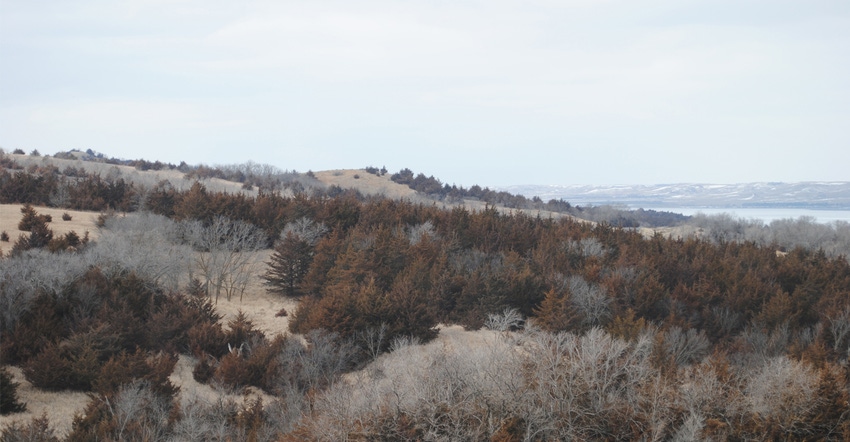November 6, 2018

In a windbreak, they are one of the hardiest, fastest-growing evergreen trees available in the upper Great Plains and Midwest, protecting farmsteads and livestock from bitter winter winds. But growing wild in the pasture, they can be one of the most formidable enemies to grazing lands if they are left unchecked for several years.
I am talking about eastern red cedar. Planted on purpose in the right location, they are hard to beat for protection from wind and extreme weather. But farmers and ranchers across the Plains states also know that they spread like wildfire and can consume a pasture in just a few years. Because they are one of the fastest-growing forestry resources in many states, foresters and researchers are working overtime to find new uses and markets for red cedar, to help utilize this growing resource and to eliminate a nuisance tree.
When I was young, several neighbor families had an open invitation from a farmer friend to cut as many cedar trees as we wanted from his pastureland along the Missouri River to use as Christmas trees in our homes. About the first weekend in December, five or six families and their children piled into pickups and trucks to traverse the cedar-covered hills near the river in hopes of finding the perfect cedar Christmas trees for several families.
In those days, there weren’t many local choose-and-cut Christmas tree farms like there are today, so cedars were viable inexpensive replacements. In the pasture, the cedar trees looked brown and drab. But, we found that if you chose a good specimen with a straight trunk and placed it in a large tree stand with ample capacity for water, those old brown cedars greened up remarkably. They provided a strong fragrance in the house that was pleasing.
After trudging through the deep snow, locating and cutting several perfect cedar trees, and loading them into the pickups and trucks, the neighbors drove to someone’s farm for a chili feed and lots of friendship and fellowship. It was a holiday tradition that I will never forget.
And some of the cedar Christmas trees we had over the years of my youth were decorated into beautiful and festive additions to our home. As I grew older and we started our own choose-and-cut Christmas tree farm, we planted mostly Scotch, Austrian and Eastern White pine trees, along with a few Colorado blue spruce and Douglas fir. We didn’t plant a single cedar tree, because we were sure that local customers wouldn’t appreciate the holiday value of the lowly cedar.
However, as I continue to cut volunteer cedars from my own pastures every year, I can’t help but remember those days when we made a Christmas adventure out of clearing cedars from our friend’s pasture every December. I doubt if cedars will replace pine trees in the choose-and-cut industry, but researchers could mark Christmas trees as one other use for the poor, underappreciated cedar trees.
You May Also Like




